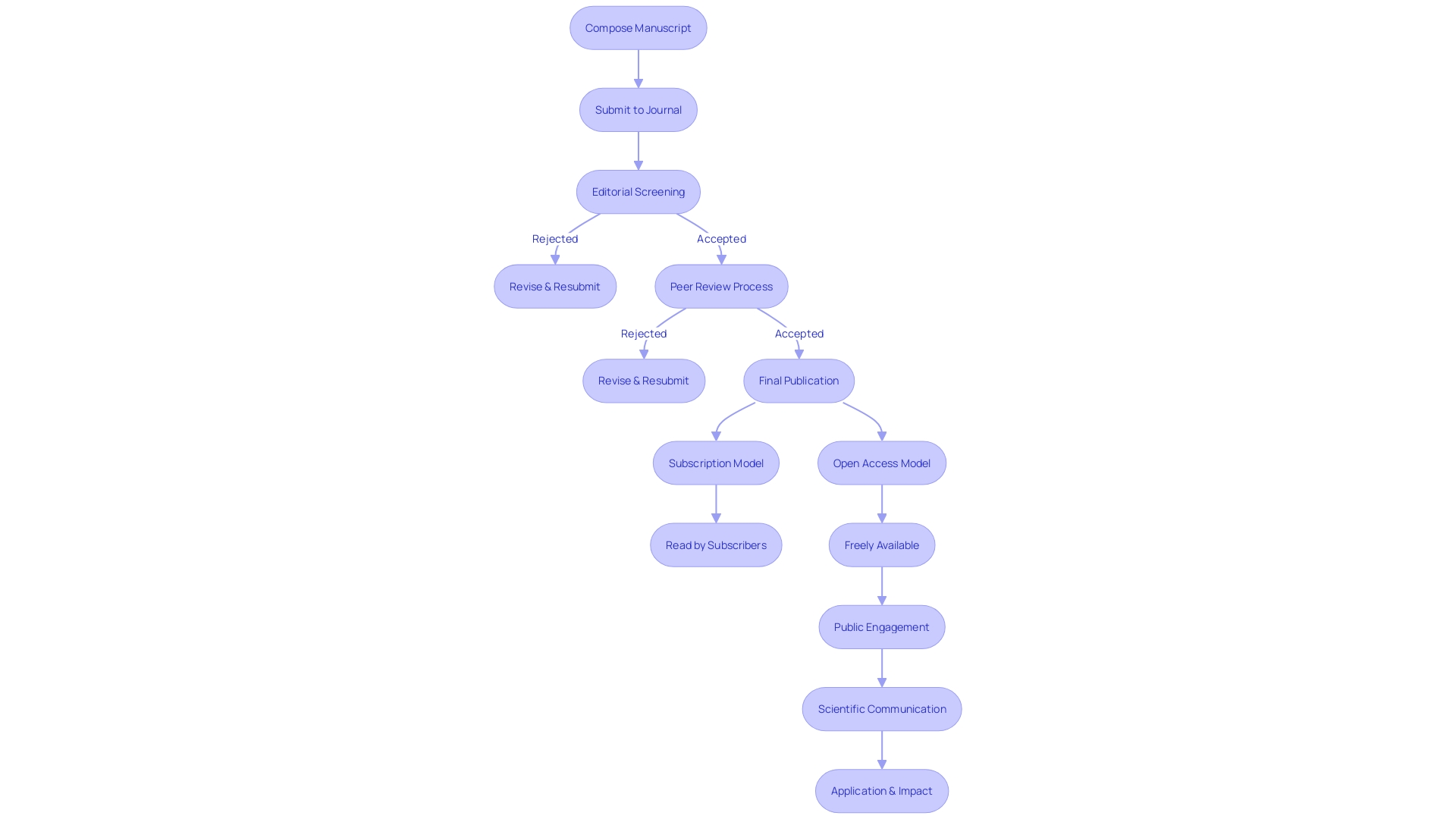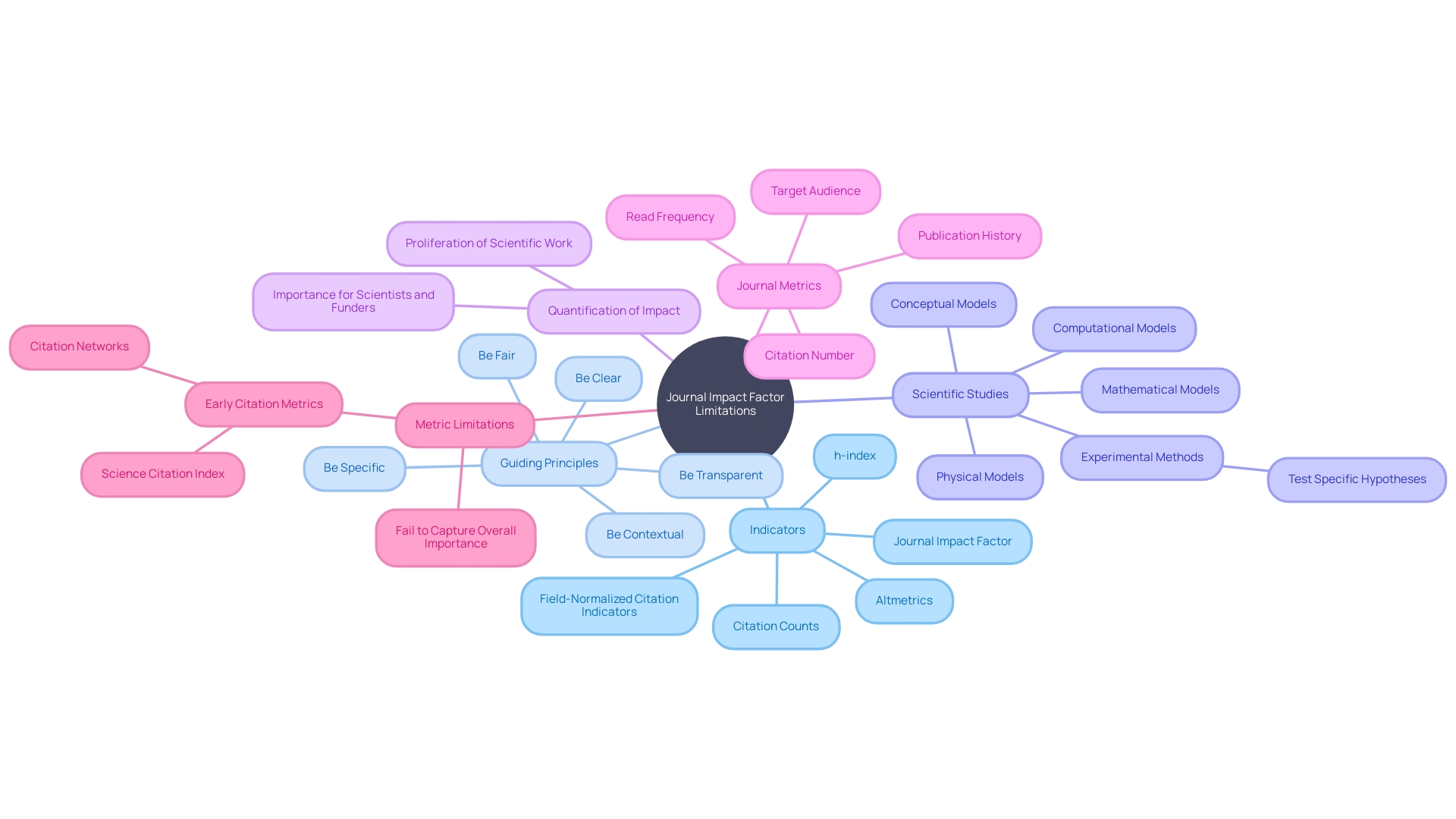Introduction
In the field of environmental science, the impact factor has long been used as a metric to assess the influence of scientific journals. However, it is crucial to recognize the limitations of this metric. The impact factor calculates the average number of citations articles receive within a specific timeframe, but it fails to account for the skewed distribution of citations across publications and can be artificially inflated by publishing review articles.
Moreover, certain types of content, such as editorials and commentaries, contribute to a journal's impact factor when cited, further distorting its validity. As a result, alternative methods of research evaluation are emerging, with a focus on qualitative assessments and a more holistic evaluation of a researcher's contribution. This article explores the limitations of the impact factor, the evolving landscape of journal assessment, the publication types and guidelines, and the trends and changes in impact factor over time.
It highlights the need for critical thinking and a balanced approach to evaluating scientific work, as well as the exploration of more robust and meaningful ways to disseminate and evaluate research. With the use of alternative metrics and the changing expectations in academic publishing, the field of environmental science is undergoing a transformative shift towards a more transparent and accessible research landscape.
Understanding Impact Factor: Definition and Importance
Although the impact factor has been a widely used measure for evaluating the influence of scientific publications, it is crucial to acknowledge its constraints, especially in the realm of environmental science. This calculation determines the average number of citations articles receive within a given timeframe. However, it does not account for the skewed distribution of citations across publications, with many articles never being cited or cited only after a considerable delay. Furthermore, the impact factor can be artificially boosted by publishing review articles, which usually receive more citations, without necessarily indicating the quality or impact of a publication's research output.
Furthermore, editorial articles and opinions, even though they are not categorized as citable materials, add to the impact factor of a publication when referenced, further distorting the credibility of the measure. This phenomenon was evidenced when certain high-profile journals were removed from the credit lists for researchers in Norway and Finland due to concerns over the scientific quality and the large variability in article quality.
In response to these challenges, alternative methods of investigation assessment are emerging. For example, the French National Research Institute for Agriculture, Food, and Environment (INRAE) has embraced a qualitative evaluation approach for its researchers, concentrating on the investigation process rather than exclusively on outcomes. This shift is inspired by the psychological work of Christophe Dejours and aims to provide a more holistic evaluation of a researcher's contribution.
The limitations of the impact factor highlight the need for critical thinking and a balanced approach to assess scholarly work. Case studies, for example, serve as an effective tool for fostering critical thinking skills in environmental science education and can lead to more nuanced solutions to environmental challenges. As the landscape of academic publishing evolves with tools like Scopus AI, which provides AI-powered search capabilities and access to preprints, the research community continues to explore more robust and meaningful ways to evaluate and disseminate research.
Key Metrics and Rankings
Although the Journal Impact Factor (JIF) is a widely recognized measure for assessing scientific journals, it is just one of many indicators available. The h-index, for instance, shows the productivity and citation impact of a researcher, while the Eigenfactor score takes into account the reputation of the publications citing a specific article. These metrics collectively offer a more nuanced portrait of an academic publication's academic prominence. However, challenges persist with the JIF's methodology, which can be skewed by the high citation rates of review articles and does not account for the significant number of papers that go uncited or are cited years after publication. Furthermore, certain editorials and commentaries, despite being non-citable items, contribute to a journal’s JIF when they are cited.
The JIF has become a contentious tool, often critiqued for its oversimplification of research quality. For instance, it fails to capture the distribution nuances such as median versus mean citations, and its susceptibility to manipulation is an issue. As the scientific community strives for more accurate measures of impact, alternative metrics like open access publications and altmetrics are gaining traction. They are proposed as either complements or substitutes to traditional bibliometric indicators.
The evolution of journal assessment is echoed in the words of Emmanuel Thiveaud from Clarivate, illustrating the ongoing refinement of tools like the Journal Citation Reports to cater to the dynamic needs of academia. This transformation is part of a broader shift in science communication, with platforms like bioRxiv leading the way in disseminating preprints, facilitating the immediate sharing of studies ahead of peer review.
This shift suggests a pivotal moment in science communication, urging a departure from the centralized control of knowledge dissemination and evaluation. Instead, a more decentralized approach is advocated, where research is accessible as preprints and undergoes communal scrutiny post-publication. As we navigate this landscape, it is essential to apply metrics thoughtfully and equitably, guided by principles of clarity, specificity, context, and fairness, to foster a system where work in the field of science can be evaluated more holistically.
Publication Types and Guidelines
Attaining publication in influential publications is a target numerous researchers strive for, in part due to the credibility it can provide to their work, as acknowledged in diverse fields such as ecology, economics, and psychology. The process by which articles are evaluated and deemed worthy of inclusion in these journals is multifaceted, relying on adherence to the journal's specific guidelines that emphasize originality, scientific rigor, and relevance. Various categories of scholarly works, whether they are investigative studies, comprehensive reviews, or opinion pieces, are evaluated with different standards, reflecting their unique contributions to the academic discourse.
Journals serve a critical role in the verification and peer review process, acting as gatekeepers to ensure the quality of published studies. This traditional system is gradually evolving with the digital age, with some advocating for the use of preprints and post-publication reviews to expedite and democratize access to research findings. Ireland's recent initiative to establish national guidelines for open-access publishing by 2030 underscores the global shift towards more transparent and accessible scientific communication.
With over 470,000 journal articles published annually by Elsevier alone, researchers must navigate a complex landscape of publication options. Choosing the appropriate channel for one's investigation is merely the initial stage, succeeded by a process of composing, submission, and advertising, each phase directed by a collection of standards and values intended to optimize lucidity, openness, precision, context, and impartiality. It's a dynamic environment where the impact factor still holds sway, but alternative metrics and changing expectations are shaping a new era of academic publishing.

Trends and Changes in Impact Factor Over Time
The Journal Impact Factor (JIF) serves as a proxy for the perceived prestige of academic journals, but its reliability as an indicator of study quality is increasingly questioned. In fields like microbiology and immunology, the scientific community acknowledges that investigations are frequently interdisciplinary, blurring the lines between categories. This interconnectedness, as analyzed by Herrera et al. using network analysis within physics, suggests that citation patterns do not always reflect the true impact or innovation of scientific studies. Emmanuel Thiveaud from Clarivate emphasizes the significance of adjusting measurements like JIF to more effectively meet the requirements of the scholarly community, incorporating the inclusion of the Emerging Sources Citation Index in their recent Journal Citation Reports update. These reports, sought after for their thorough analysis, provide insights into publication performance, yet the straightforward formula for JIF calculation—citations to recent articles divided by the number of citable items—does not consider the intricacies of academic influence, such as the delayed recognition of studies. Furthermore, the growth in publication volume raises concerns about the sustainability of peer review and the diminishing readership for the average paper, as noted in the preprint discussed by industry observers. To genuinely anticipate scientific accomplishment, the science community must take into account substitute measures that can supplement or substitute the JIF, recognizing its restrictions and the intricate, evolving character of impactful investigation.

The Role of the Journal in Environmental Sciences
Academic publications in the field of environmental sciences serve as crucial platforms for the distribution and evaluation of study outcomes. These publications, particularly those with high impact factors, broaden the reach and influence of investigation, guiding the direction of scholarly exploration and informing policy decisions. Case studies such as Jaeckel et al.'s analysis of deep-sea mining's (DSM) social legitimacy, and Amon et al.'s examination of climate change's effects on Pacific tuna fisheries, underscore the complexity of environmental challenges and the necessity for interdisciplinary approaches to understand and address them. This emphasizes the role of journals in not only reporting studies but also in promoting a rigorous debate on methodologies and findings, as well as their implications for both ecosystems and societies. Moreover, as new collaborative initiatives like the Virtual Multiomics Lab (VMOL) illustrate, there is an increasing push towards democratizing access to scientific knowledge and analytical tools. Through open-access platforms, VMOL demonstrates the potential for global scientific communities to contribute to environmental science, regardless of geographical or financial constraints. In the same vein, ecological diffusion models like those applied to sea otter population dynamics in Southeast Alaska demonstrate how advanced statistical frameworks can refine our understanding of species recovery and management. With the introduction of tools like Scopus AI, which utilizes artificial intelligence to synthesize study summaries, and the incorporation of Preprints in literature searches, the accessibility and early dissemination of scholarly work are further revolutionized. These advancements contribute to a more robust and transparent research landscape, ensuring that the environmental sciences continue to evolve in response to the growing complexity of global ecological issues.
Conclusion
In conclusion, the impact factor has limitations in assessing the influence of scientific journals in environmental science. It fails to account for the skewed distribution of citations and can be artificially inflated by publishing review articles. Alternative methods of research evaluation are emerging, focusing on qualitative assessments and a holistic evaluation of a researcher's contribution.
Other metrics like the h-index and Eigenfactor score offer a more nuanced understanding of a journal's academic prominence. Open access publications and altmetrics are gaining traction as complements or substitutes to traditional bibliometric indicators.
The evolving landscape of journal assessment is accompanied by changes in publication types and guidelines. Journals play a critical role in verifying and peer-reviewing research, but the traditional system is gradually evolving with the digital age. Initiatives like open-access publishing guidelines and the use of preprints and post-publication reviews are making scientific communication more transparent and accessible.
The trends and changes in impact factor over time highlight the need to adapt metrics to better serve the research community's needs. Alternative metrics that consider the complexities of scientific influence and the evolving nature of impactful research are necessary.
In the field of environmental sciences, academic journals serve as pivotal forums for the dissemination and scrutiny of research findings. They contribute to addressing complex environmental challenges through interdisciplinary approaches and rigorous debates. Journals play a crucial role in informing policy decisions and fostering global collaboration and access to scientific knowledge.
Overall, the field of environmental science is undergoing a transformative shift towards a more transparent and accessible research landscape. With the use of alternative metrics, critical thinking, and a balanced approach to evaluating scientific work, researchers can better contribute to addressing the growing complexity of global ecological issues.
Stay up to date with the latest trends in journal assessment and research evaluation.




